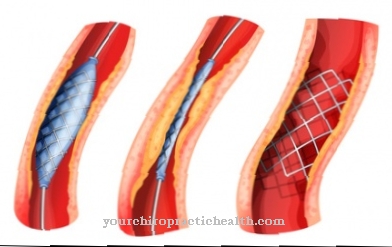The field of Oral surgery, which is a branch of dentistry, includes a wide range of treatments in the oral area. Which complaints are being dealt with? What procedures does it include to cure an oral disease?
What is oral surgery?

Oral surgery encompasses the field of dentistry. This type of surgery mainly deals with surgical interventions in the mouth area. Fractures and dislocations in the oral area are also treated. Treatment also includes adequate diagnostics carried out by a specialist.
After successfully completing a degree in dentistry, a four-year advanced training course can be completed. After passing the specialist dental examination at the responsible state medical association, the student is qualified as a specialist in oral surgery.
Treatments & therapies
The areas of oral surgery include not only tooth extraction, but also the removal of wisdom teeth, cysts, tumors, and abscesses. Most often teeth that are affected by caries or have to be removed due to lack of space are removed. This mainly affects the wisdom teeth.
You can move other teeth. Since they have often already been destroyed by caries, the wisdom teeth are not worth preserving. The gums in the surrounding oral cavity can become severely inflamed again and again. To avoid this, the wisdom teeth are removed under local anesthesia, and rarely under general anesthesia.
If teeth are in the jaw and cannot break through the gums, we speak of retained teeth. These are removed with the help of a surgical procedure. Shifted teeth no longer cause pain. Surgical intervention is necessary if cysts form in the mouth. Basically, cysts are fluid-filled, round cavities that form in the bone or soft tissue. Cysts often grow very quickly and displace teeth, for example. Most of the cysts are benign. Removal is only possible surgically.
For example, cysts are caused by dead teeth caused by tooth decay. Inflammations or cysts form at the tips of the roots and must be removed. To preserve the tooth, it is closed with a root filling.
Another job of the oral surgeon is the removal of mostly benign tumors from the oral cavity. These tumors mainly grow on and under the tongue, in the area of the lips, cheeks or on the roof of the mouth. Formation on the gums is rare, but still possible. If the roots of the teeth become inflamed or the gum pockets form pus-filled swellings on the jaw, face and neck. In this case, surgical treatment is necessary. Further treatment with antibiotics is recommended for an optimal healing process.
Oral surgery is also used in traumatology. Accidents cause broken bones in the jaw and face area, or tooth fractures. This is where teeth are implanted after serious accidents. Dental implantology is a modern method in dentistry in which teeth are inserted into the jaw.
If the patient has symptoms in the salivary gland, an oral surgeon is consulted. After diagnosing salivary stones, for example, the surgeon develops a suitable therapy for reduction. If the diagnosis of maxillary sinus diseases, including cysts, chronic inflammations and foreign bodies, is found, the oral surgeon treats the patient. However, the cause must lie in the dental area. In old age it is common for patients to have a denture inserted.
Since the jaw is often in a poor general condition, surgical measures, individually adapted to the person, must be taken before the dentures are made. Excess mucous membrane is removed, the oral vestibule is prepared for the prosthesis and interfering ligament attachments are surgically removed. This is done with local anesthesia.
You can find your medication here
➔ Toothache medicationDiagnosis & examination methods
If there is severe pain or swelling in the jaw and mouth area, a doctor should be consulted. The symptoms occur at intervals and get worse depending on the disease. Bacteria found in the oral cavity when it is infected can spread throughout the body and also cause damage to the joints or heart.
Operations on the face or in the oral cavity are always associated with a certain risk. A precise diagnosis is therefore absolutely necessary. Only in this way is it possible to treat the complaints and perform interventions of the highest standard.
In the most common cases, a specialist examination is sufficient to ensure safe treatment. However, in order to obtain sufficient information about the disease, an X-ray examination and a model examination (three-dimensional representation of the affected area) are arranged. If a particularly high-resolution image is required, computed tomography is performed. A digital volume tomography (DVT) shows the anatomical structures down to the smallest detail and represents them spatially. The surgeon can thus precisely identify the bony structure of the upper and lower jaw and quickly identify special features.
Should an intervention be necessary, an optimal pain treatment will be discussed with the oral surgeon. Only individual teeth can be anesthetized with the aid of a gel, or short-term general anesthesia is possible for longer, complicated procedures. In order to prevent oral diseases, it is advisable to visit the dentist regularly even in childhood. The early detection examination can indicate at an early stage that regular dental care and oral hygiene are valuable.
Prophylaxis is possible later. As a result, expensive tooth corrections can be avoided and the patient can enjoy his or her own healthy teeth for longer. It is considered indispensable before periodontal treatments or surgical interventions.




.jpg)







.jpg)



.jpg)










.jpg)
